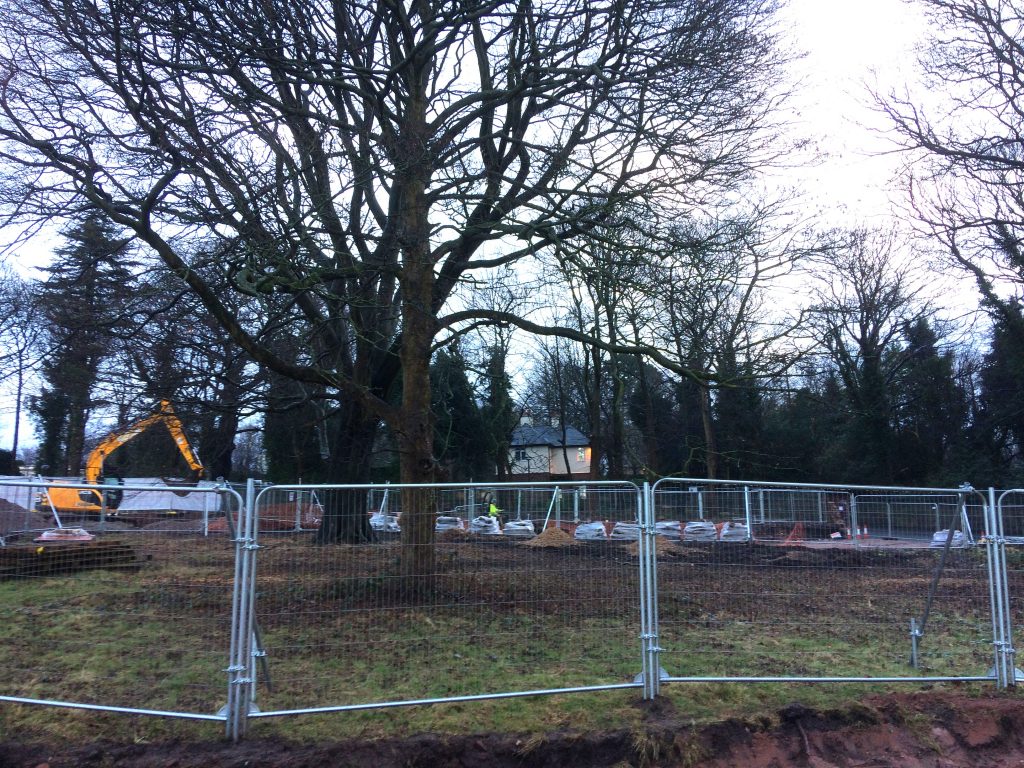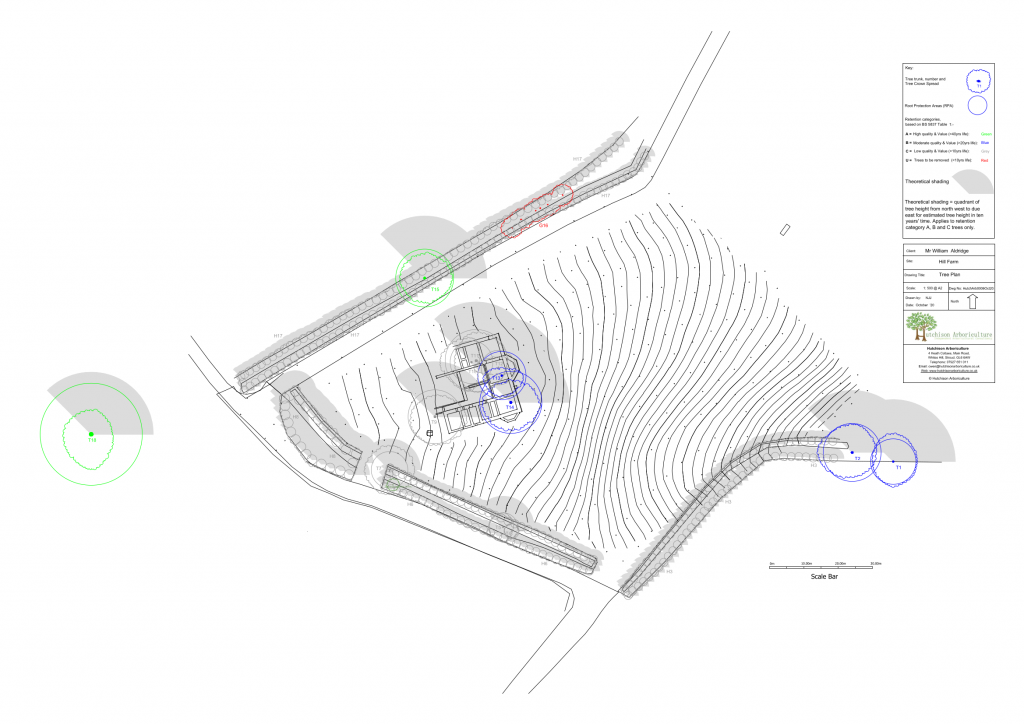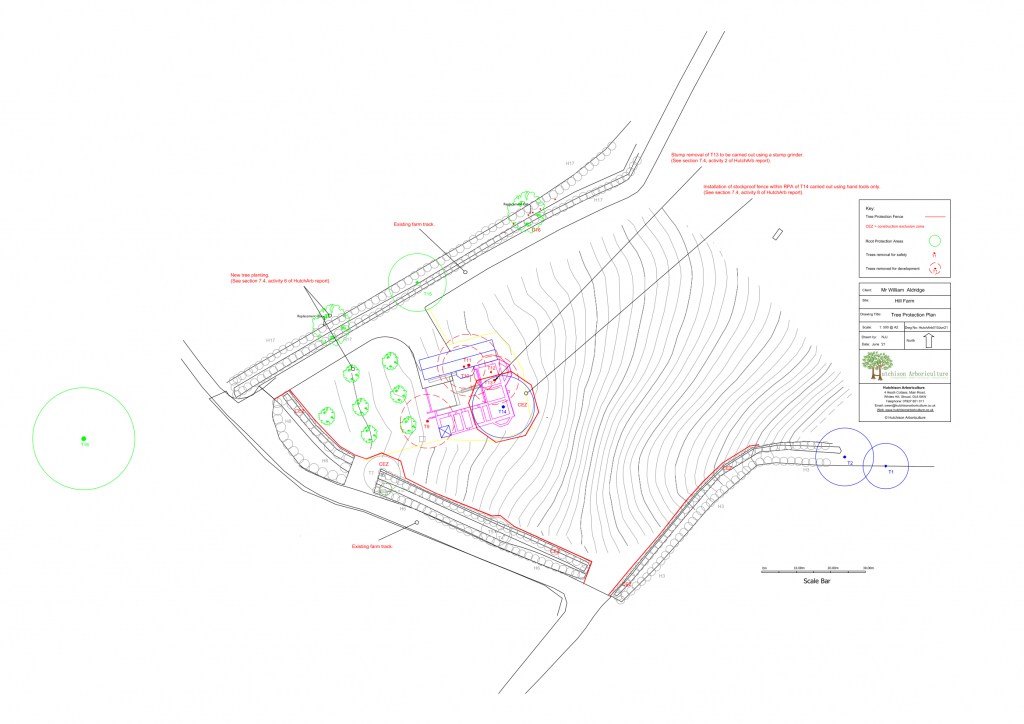Under the UK planning system, local authorities have a statutory duty to consider the protection and planting of trees when granting planning permission for proposed development.
We will work closely with architects, planning consultants and consulting engineers, providing advice at every stage of the process. Our reports are site-specific, user friendly and our plans are produced in CAD and supplied in DWG format.
As part of a planning application, an LPA may require some or all the information below. For simplicity, we break this down into a two-stage process.


BS5837 2012 Tree Survey and Tree Constraints Report and Plan.
We will survey all trees, shrubs and hedges on and surrounding the proposed development site. This provides information on trees species, dimensions, age, condition, future remaining contribution and retention categories. For this we will typically require a topographical survey. Using CAD and the survey information we will produce a Tree Constraints Plan showing crown spread, root protection areas, theoretical shading patterns and tree retention categories. This will be used to inform design and layout. Once design and layout are finalised, we will conduct stage 2 as outlined below.
Arboricultural Impact Assessment (AIA), Arboricultural Method Statement (AMS) and Tree Protection Plan (TPP).
The finalised design layout is overlaid onto our tree constraints plan, which guides our Arboricultural Impact Assessment. The AIA details all potential arboricultural impacts posed by the development. An assessment is made on the extent of each potential impact and recommendations are made for minimising or mitigating their effects.
The arboricultural method statement (AMS) provides a clear, sequential set of instructions, detailing how retained trees will be protected throughout the project. It is a stand-alone document, which is retained onsite and is designed to be used by contractors and construction personnel. The tree protection plan provides details and precise locations of all protection measures and must be used in conjunction with the AMS and TPP.

47 Campion Crescent, Stowmarket, Suffolk, IP14 2DQ.